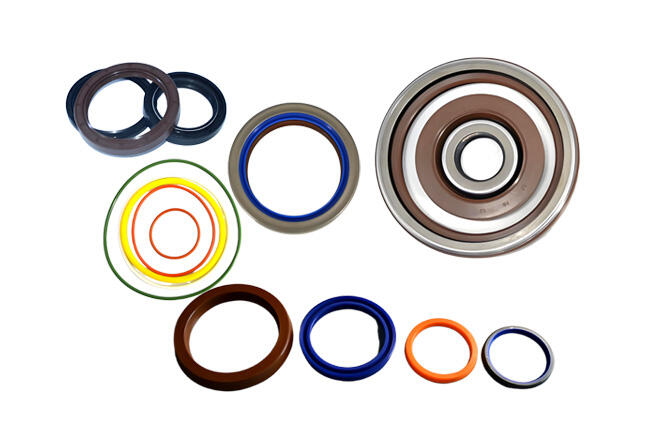In naval engineering, seals are small components with a large impact. On aircraft carriers and other large vessels, seals are used in propulsion systems, hydraulic lifts, cooling circuits, and countless auxiliary devices. Their performance directly affects safety, reliability, and operational readiness.
Harsh Operating Conditions
The marine environment is unforgiving. Salt spray and corrosion constantly attack materials. High pressure and shock loads are common in hydraulic systems and propulsion shafts. Temperature fluctuations range from hot engine rooms to cold deck areas. Seals must remain stable across these extremes.
Key Characteristics Required
Corrosion resistance to seawater, fuels, and lubricants.
High pressure and shock resistance for hydraulic cylinders and valves.
Wear resistance and low friction to ensure long service life and reduce energy loss.
Wide temperature capability, from subzero conditions to over 200°C.
Aging resistance, preventing cracks and hardening during long deployments.

Materials and Designs
FKM (fluoroelastomer) for high temperature and oil resistance.
EPDM for ozone and steam resistance in cooling and freshwater systems.
PTFE for low friction and strong corrosion resistance in rotating parts.
Polyurethane for excellent wear resistance in hydraulic applications.
Composite structures combining metal and elastomers for added strength.
Questions from Distributors and Wholesalers
Q: What do customers ask most often A: Whether seals can survive long term in seawater and withstand high pressure shocks.
Q: How to build loyalty A: By keeping common sizes in stock and offering quick alternatives.
Q: How to balance cost and service life A: By showing the cost of downtime and explaining why premium seals are justified in critical positions.
Q: How to compete with global brands A: Through fast delivery, local inventory, and strong technical support.
As naval vessels move toward longer missions and smarter systems, seals must evolve. Future trends include low friction materials, environmentally friendly compounds, traceable production batches, and extended maintenance intervals.
There is no single answer to what makes the perfect naval seal. The key lies in matching materials and designs to the environment, while combining them with responsive service and technical expertise. Those who achieve this will ensure stability and trust in the demanding world of naval operations.
 Hot News
Hot News